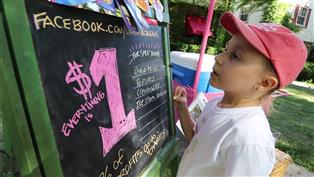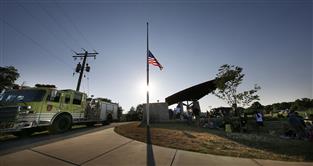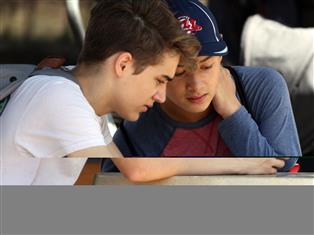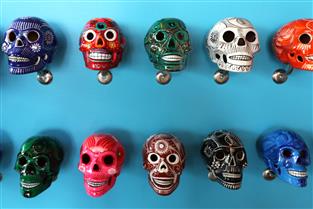Wauwatosa middle and elementary students are working with Harley-Davidson engineers to design, engineer and program LEGO robots for the worldwide competition First Lego League.
The competition has two parts, robot engineering and real-world problem solving. The theme this year is "Senior Solutions" and will see students tackling problems facing the elderly.
This is the district's third year of partnering with the Project Lead The Way club to compete in the event.
Working as a team
The idea behind the competition is to grab the students' attention with the robot creation so that they can work on a problem-solving science project as a team.
Jerry Merz, a Project Lead The Way partner and team member, said: "They love it otherwise they wouldn't be coming to the meetings. You can't force them to go and force them to do things like that. I have three boys and you have to make it interesting for them to keep coming back."
The students must come up with a researchable topic for the competition's theme, which changes yearly. Last year's theme was food solutions and saw a Wauwatosa group create a commercial about bacteria growth on exposed food. One of the five competing Wauwatosa teams has created a stair-friendly design for a four-pronged walker. The idea behind it is to have the walker fold vertically so that two prongs hit a high step and two hit a low step.
If any competitor wins the local competition, which is held at Waukesha West High School on Nov. 11, they can advance to a regional competition and then a state competition. There are over 150,000 teams around the world competing this year.
Solving everyday tasks
The robots aren't all fun and play either; the students have to program them to achieve different missions, which were given to them on Aug. 30. Each team, all of which are from Wauwatosa elementary or middle schools, has two-and-a-half minutes to have their robot complete 22 tasks.
The tasks vary from stacking quilts to identifying and selecting colored bottles to navigating an obstacle course. It is nearly impossible to have the robot complete all the tasks in the limited amount of time, so students have to choose which tasks they want the robot to do.
A Harley helping hand
Harley-Davidson has lent their hand to the teams. The Milwaukee-based motorcycle manufacturer gave the teams a $4,000 grant and lets one engineer get out of work early each week to advise the teams.
William Anderson, supervisor of Special Programming, said, "I know it costs money for Harley to release their employees early, but it's helping kids see engineers as professionals, which is where we're hoping to plant the seeds for great professional careers to pursue."
The students have found help from other sources as well. One group chose nanotechnology for their research topic and called an MIT engineer, who was able to guide their research into the microscopic robotic technology.
The judgment
Each team is judged on multiple layers using a rubric. The teams must have a solid approach to their research, findings and conclusions on their elderly solution. The teams must also be able to navigate their robots efficiently throughout the course.
Although no Wauwatosa teams have made it to the regional competition, there are consolatory awards given. These awards can range from best research to best group work and the Wauwatosa teams have won some of these awards each year.
More from News and Features
- Anodyne Coffee plans to open location in Wauwatosa Village
- Wauwatosa Meetings: Aug. 4
- Video: Wauwatosa girl's curbside ice cream stand raises money for the hungry
- Wauwatosa News and Notes: Hands-only CPR training offered; Firefly Art Fair is Aug. 6-7
- Wauwatosa Ask Now: Why are there barriers and fencing along the North Avenue bridges over the Menomonee River?
- Mystery Photo Contest: July 28
- Wauwatosa gears up for National Night Out event, this year at the zoo
- Election 2016: Wisconsin's 4th District candidates weigh in
- Wauwatosa's Luther Manor residents share smiles through flower delivery
- Wauwatosa Police Report: July 17-23














